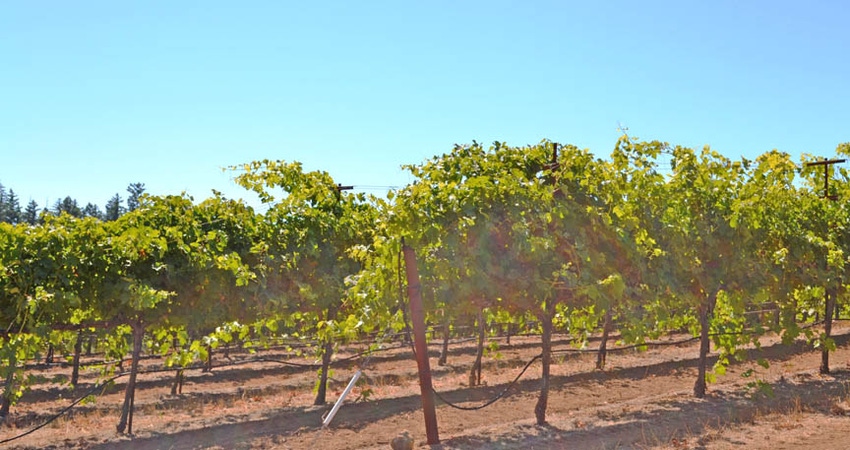
Despite bud break that started a week or so later than usual and two frost events in the middle of the month, new shoots in the wine grape vineyards along the northern California coast had pushed out 6 inches and were growing fairly rapidly in the waning days of April.
Weather has been mostly ideal and temperatures were a warmer than normal, reports Glenn McGourty, University of California Extension viticulture advisor for Lake and Mendocino counties.
Bud break in Chardonnay and Pinot Noir blocks began the first of April. Should the warm temperatures hold, he expects Chardonnay vines to be back on track to start flowering on time around May 20.
A passing cold front in mid-April sent temperatures down as low as 28 degrees in the coldest spots of Potter Valley and Redwood Valley. However, McGourty received no reports of damage. “Growers kept on top of things with their frost protection,” he says.
To mitigate the impact on endangered salmon and steelhead in diverting water from the Russian River and its tributaries, many growers in the river’s watershed in Mendocino and Sonoma counties have built ponds and reservoirs to store rainfall runoff for frost protection and irrigation use.
Although precipitation since the first of the year has been light, heavy rains last fall and early winter, have filled these off-stream storage facilities.
Since July 1 of last year, the two-county area has received an average of 27 inches of rain. Only 5 inches have fallen since the first of January. Normally, from July 1 through the following mid-May, Ukiah, Calif., in Mendocino County records about 35 inches of rainfall.
“With the reservoirs full, we’re in good shape for water, right now,” McGourty says. “Still, growers will be watching their water usage this season pretty carefully. Wildflowers are blooming and the vegetation in the landscape seems to be drying down about two to three weeks ahead of normal. It could be another dry summer.”
Temperatures in the 70 to 85-degree range through much of April were ideal for growth of the powdery mildew. To control it, growers have been spraying their vineyards with wettable sulfur, stylet oil or other fungicides.
This season a new insect pest has raised concerns among local wine grape growers. Virginia creeper leafhopper, sometimes called the zigzag leafhopper, showed up last season and caused some serious damage in two vineyards, one in Lake County near Upper Lake and the other in the Hopland area of Mendocino County.
Often, the Western grape leafhopper shows up in vineyards late in the season, McGourty notes. Last year growers were seeing a number of leafhoppers at that time and, without looking closely, assumed it was the Western grape leafhopper. Evidently, there were Virginia creeper leafhoppers in the mix.
The Western grape leafhopper is fairly easy to control in conventionally-grown vineyards with timely insecticide sprays, he says. Often, treatment is not even required. At the same time, organic growers have long relied on natural predators, including the tiny Anagrus spp. wasp that parasitizes leafhopper eggs, to control Western grape leafhoppers. However, Anagrus doesn’t seem to be effective in controlling the Virginia creeper leafhopper.
“We’re very concerned,” McGourty says. “Organic growers may not have the biocontrol agents they need to control this pest. Also, conventional growers, who have done a great job of reducing pesticide use in our two counties, may have to start putting on more chemicals to control this particular leafhopper.”
If you would like to read more about California grape growing, subscribe to GrapeLine, the exclusive electronic newsletter sponsored twice a month by Chemtura. To sign up, go to the Newsletter Sign Up box on the Western Farm Press home page (westernfarmpress.com). It’s free and e-mailed the second and fourth weeks of each month from March through October.
More from Western Farm Press
Agricultural pioneers battling water scarcity
Wine skeptic takes on climate change report
Honey bee decline all about colony stress
7 big questions for the farm bill debate
Amazing day in short life of worker bee
About the Author(s)
You May Also Like




